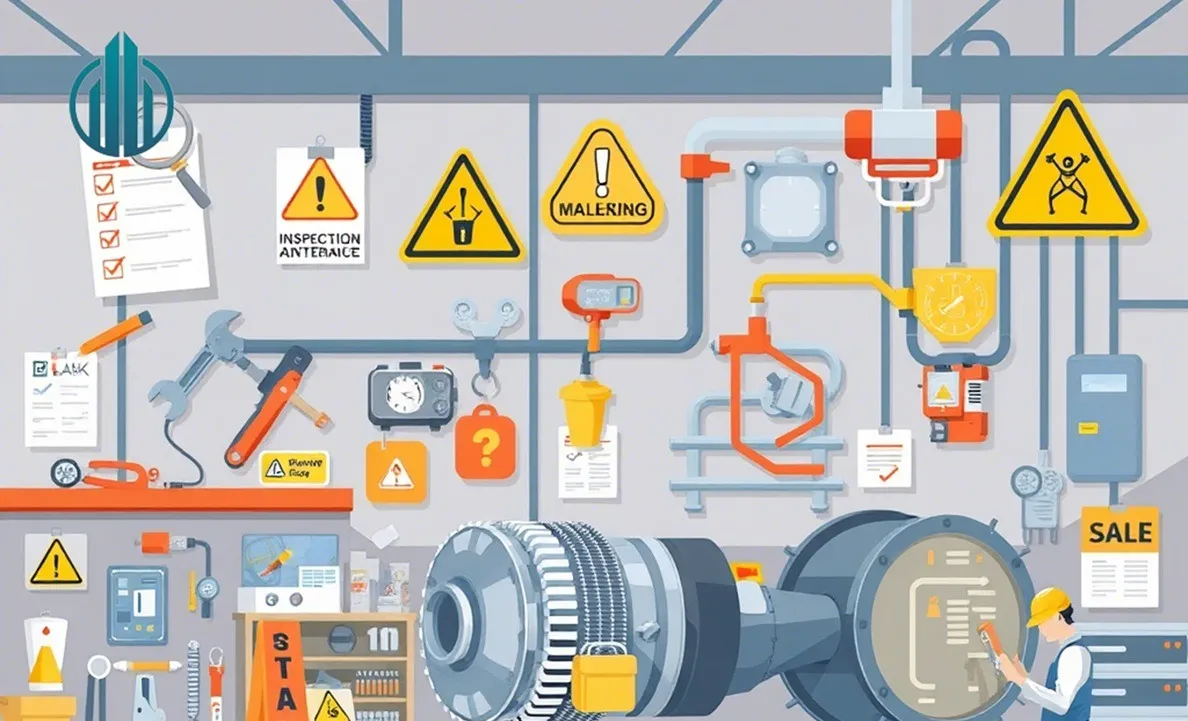
Did you know that planned preventive maintenance can reduce equipment breakdowns by up to 50% and cut maintenance costs by 12-18%? A well-structured facilities preventive maintenance plan ensures that equipment remains reliable, efficient, and cost-effective.
What is Preventive Maintenance Planning?
Preventive Maintenance (PM) Planning is the process of scheduling regular inspections, servicing, and part replacements to keep equipment running smoothly. Instead of waiting for breakdowns, PM helps organizations extend asset lifespan, reduce downtime, and improve overall efficiency.
In this article, you’ll learn how to create a preventive maintenance schedule and develop an effective PM plan to enhance asset performance.
Understanding the Goals of Preventive Maintenance Planning
Before creating a preventive maintenance plan, you must define your goals. The key objectives include:
- Extending Asset Lifespan
- Regular maintenance reduces wear and tear on equipment.
- Ensures optimal performance over a longer period.
- Prevents premature failures, reducing replacement costs.
- Reducing Downtime
- Planned maintenance prevents unexpected breakdowns.
- Helps organizations schedule repairs at convenient times.
- Improves business continuity by keeping critical systems operational.
- Improving Overall Efficiency
- Reduces energy consumption by keeping equipment in peak condition.
- Lowers emergency repair costs and increases productivity.
- Ensures compliance with safety and regulatory standards.
Assessing Asset Criticality
Not all assets require the same level of maintenance. Prioritizing critical assets helps allocate resources efficiently.
How to Identify Critical Assets
- ️ Define the importance of each asset:
- Does the asset impact production, safety, or compliance?
- ️ Calculate the cost of downtime:
- How much revenue is lost if this asset fails?
- ️ Rank assets by importance:
- High-priority assets require more frequent maintenance.
Example:
High-Criticality Assets: HVAC systems in data centers, industrial machinery, elevators.
Medium-Criticality Assets: Lighting systems, office equipment.
Low-Criticality Assets: Furniture, decorative features.
By focusing on high-impact assets first, your preventive maintenance schedule will be more effective.
Creating a Preventive Maintenance Schedule
A well-structured maintenance schedule ensures that maintenance tasks are performed at the right time without disrupting operations.
Factors to Consider in Scheduling Maintenance
- Manufacturer Recommendations:
- Follow the guidelines for servicing frequency.
- ✔️ Equipment Condition:
- Use sensor data or inspections to determine maintenance needs.
- ✔️ Operational History:
- Review past maintenance records to predict failures.
How to Establish a Preventive Maintenance Schedule
- ️ List all assets and their maintenance requirements.
- ️ Set a frequency for maintenance tasks (daily, weekly, monthly, annually).
- ️ Assign tasks to technicians or teams.
- ️ Use a CAFM system to track and automate schedules.
Example of a PM Schedule:
Monthly: HVAC filter cleaning.
Quarterly: Lubrication of moving parts in machines.
Annually: Comprehensive inspection of electrical systems.
Sticking to a well-planned preventive maintenance schedule helps prevent unexpected failures and costly repairs.
Developing a Preventive Maintenance Checklist
A preventive maintenance checklist ensures that technicians follow standard procedures for each maintenance task.
How to Create a PM Checklist
- Identify key maintenance tasks.
- Break tasks down into step-by-step instructions.
- Assign responsibility to specific team members.
- Use a digital checklist for tracking and reporting.
Example Preventive Maintenance Checklists
HVAC System Maintenance Checklist
- ️ Inspect and clean air filters.
- ️ Check refrigerant levels.
- ️ Lubricate moving parts.
Electrical Equipment Maintenance Checklist
- ️ Inspect for loose connections.
- ️ Test circuit breakers.
- ️ Clean dust from electrical panels.
Using a preventive maintenance checklist improves consistency, efficiency, and accountability in maintenance operations.
Optimizing Your Preventive Maintenance Plans
A good maintenance plan is not static—it should be continuously improved.
How to Optimize Your Preventive Maintenance Plan
- Collect and Analyze Data:
- Track maintenance costs, failures, and downtime.
- Adjust the Schedule as Needed:
- Increase maintenance for high-failure assets.
- Reduce unnecessary maintenance for low-risk equipment.
- Use a CAFM System for Automation:
- Automate scheduling, task tracking, and reporting.
By refining your facilities preventive maintenance plan, you can maximize efficiency and minimize costs.
Frequently Asked Questions (FAQ)
-
What is the ideal frequency for preventive maintenance?
It depends on the asset type, manufacturer recommendations, and operating conditions. Regular inspections and adjustments ensure the best results.
-
How do I know if my preventive maintenance plan is working?
Track KPIs like reduced downtime, maintenance costs, and equipment failures. If performance improves, your plan is effective.
-
Can preventive maintenance software help in scheduling?
Yes! A CAFM system can automate scheduling, provide alerts, and generate reports to enhance maintenance efficiency.
Conclusion
A successful preventive maintenance plan requires careful planning, prioritization, and continuous optimization.
- Define clear goals to maximize asset performance.
- Assess asset criticality to focus on important equipment.
- Create a maintenance schedule based on manufacturer recommendations and usage data.
- Develop a checklist to ensure consistency.
- Continuously improve your PM plan using real-time data.
Want to streamline your maintenance process? Contact us today to see how our CAFM IMS system can help!
